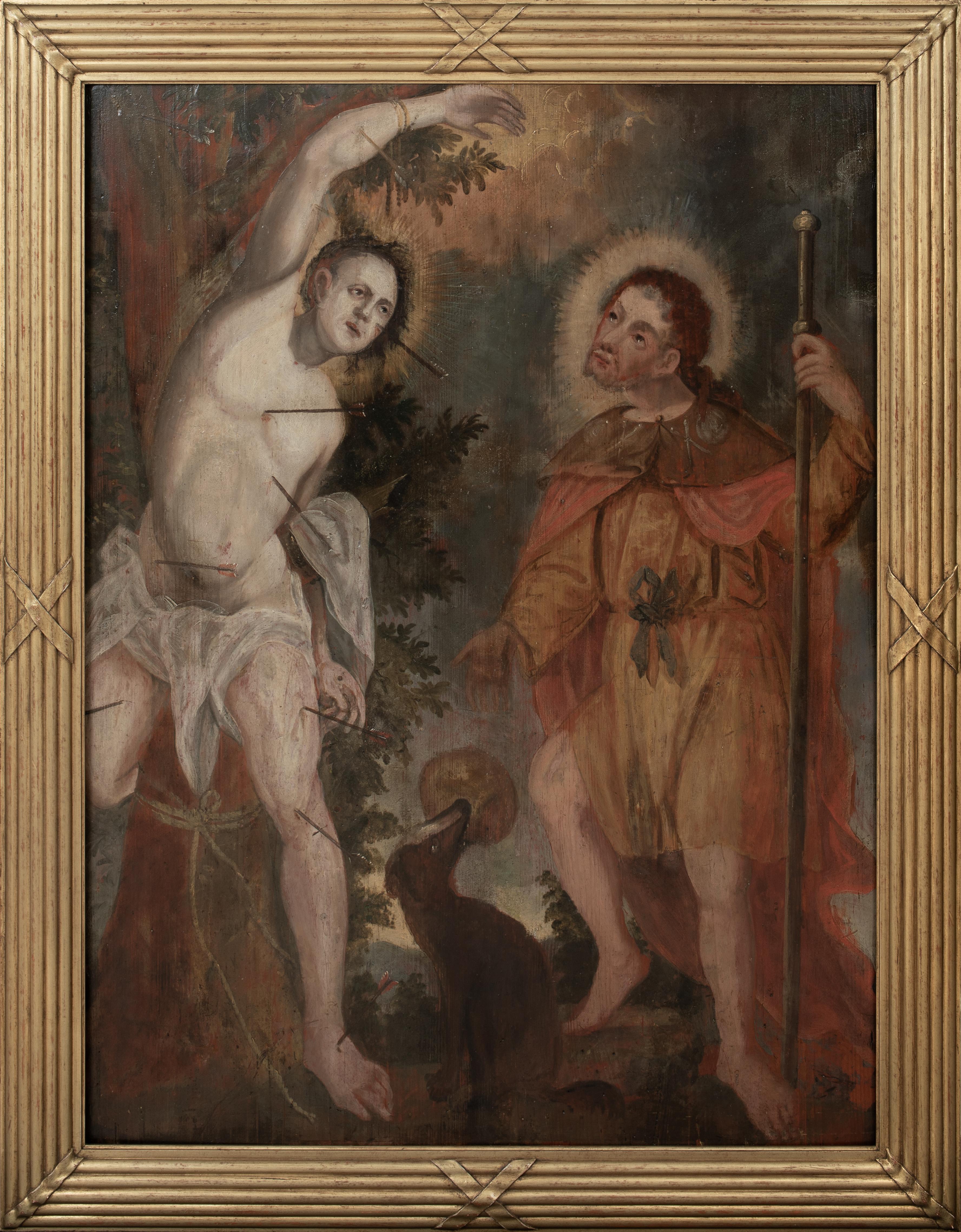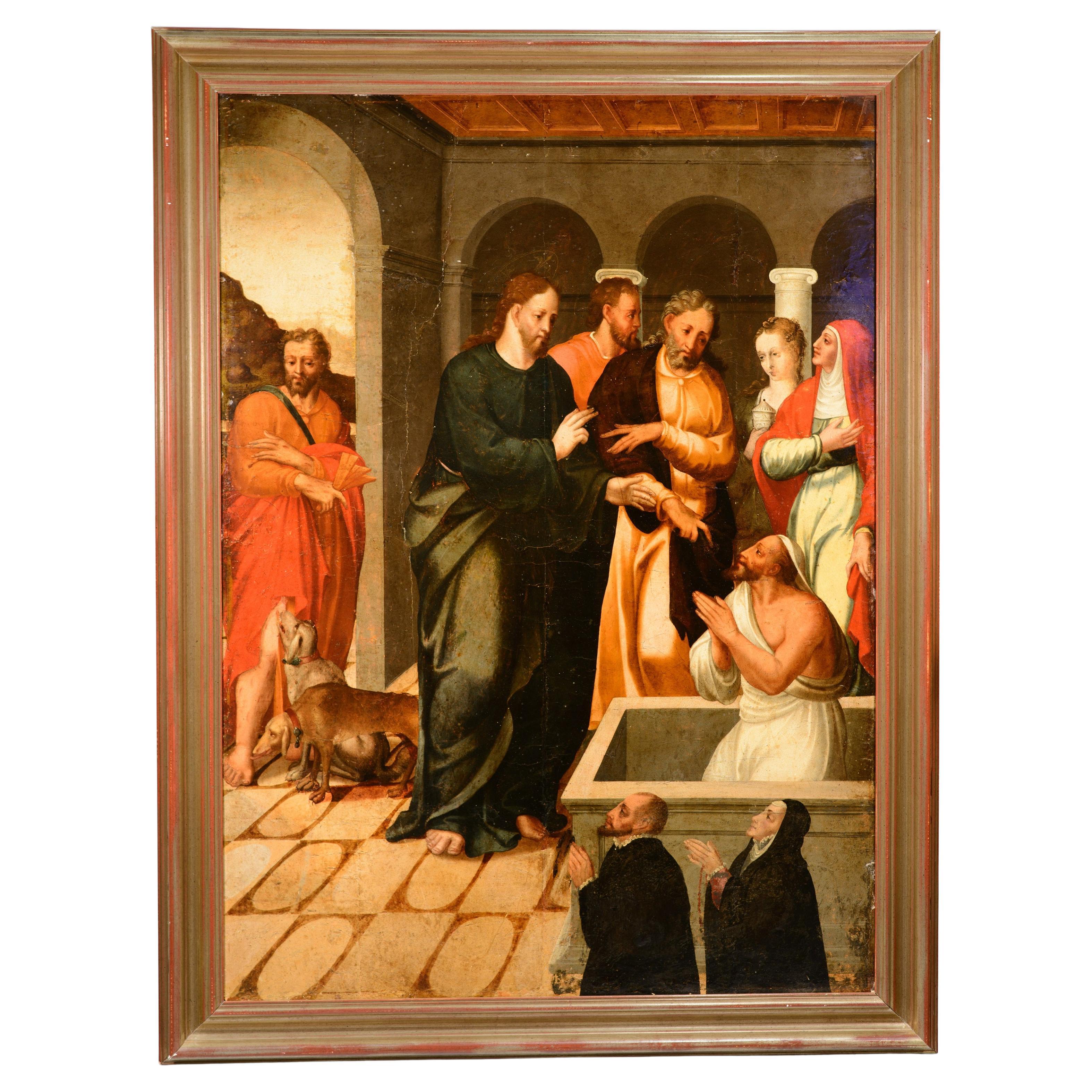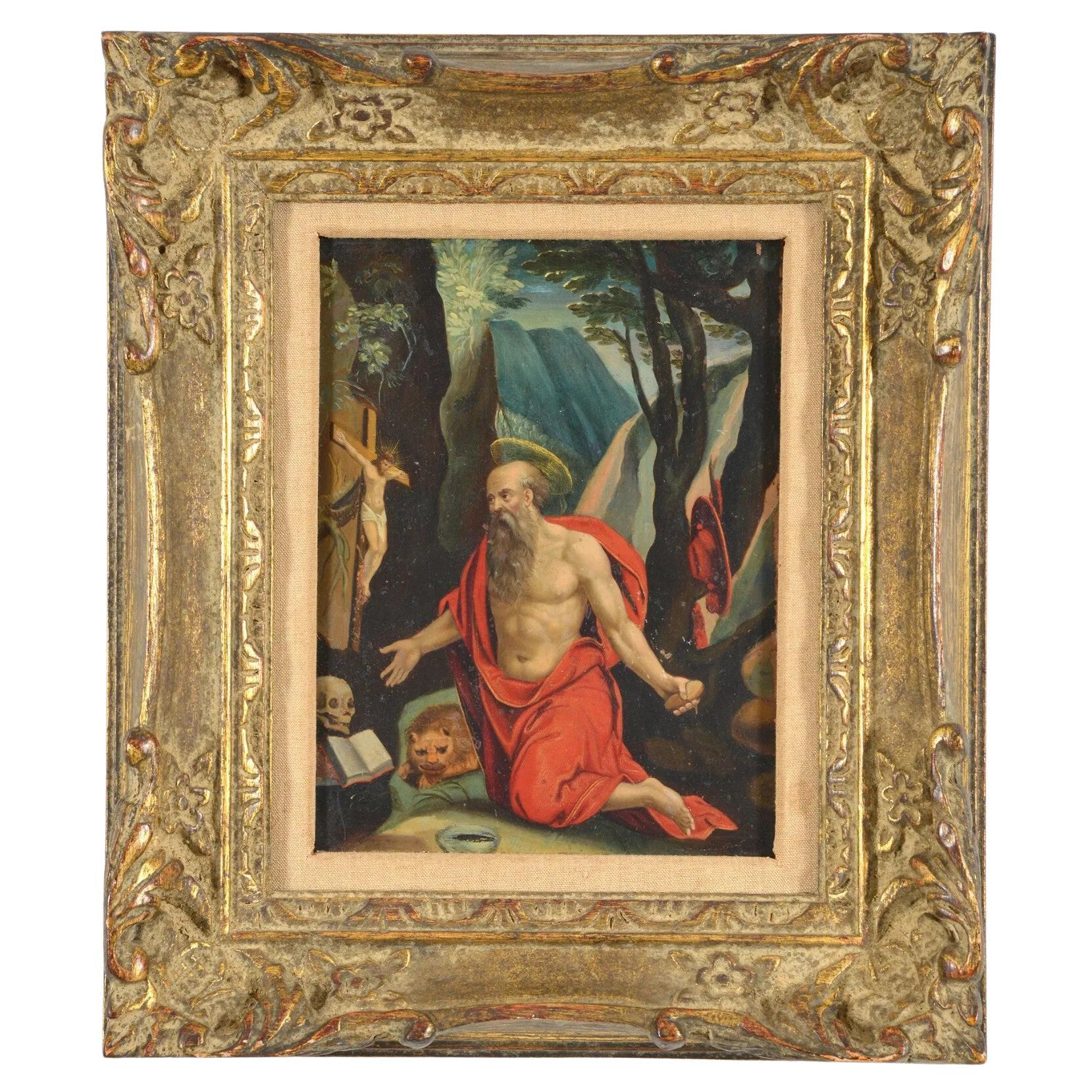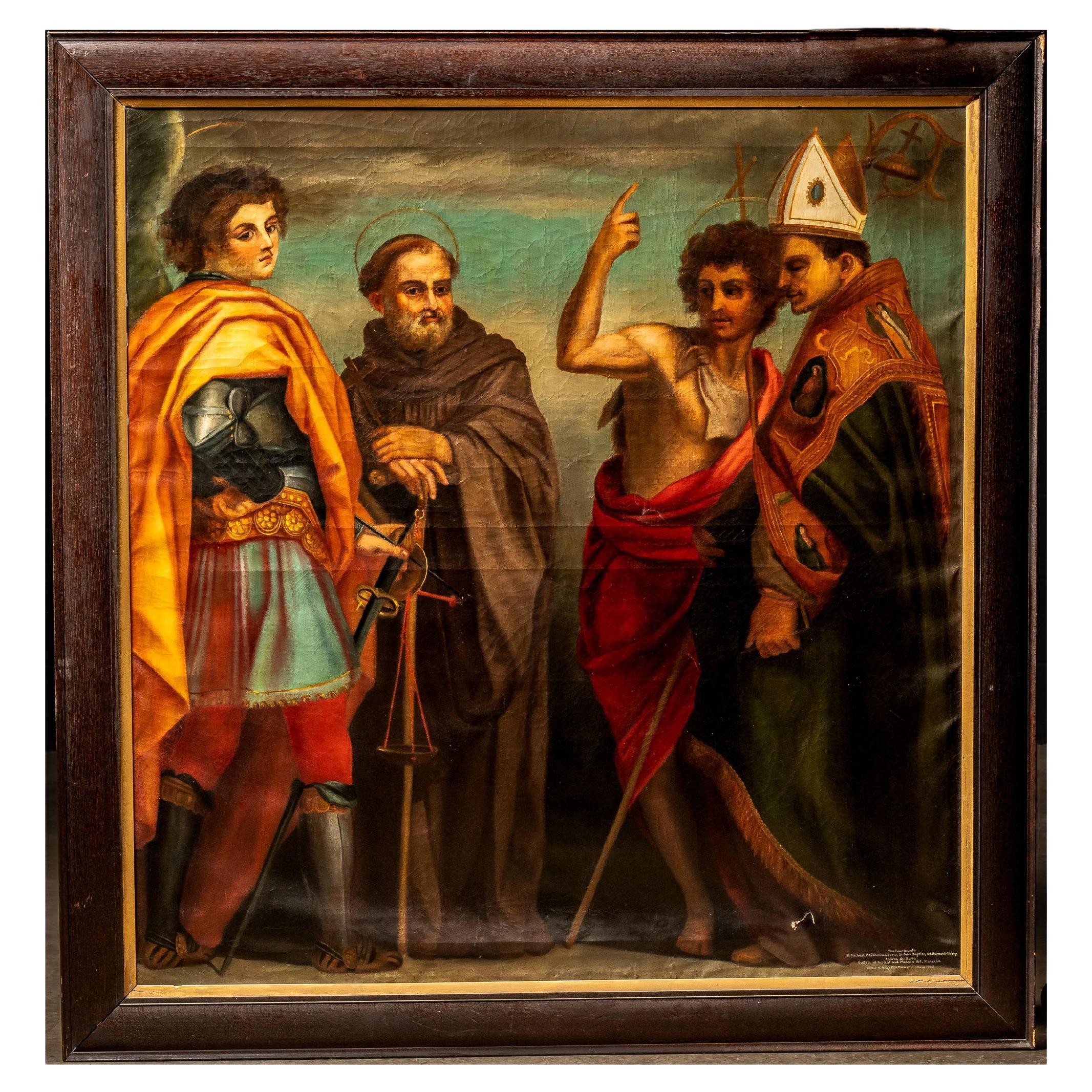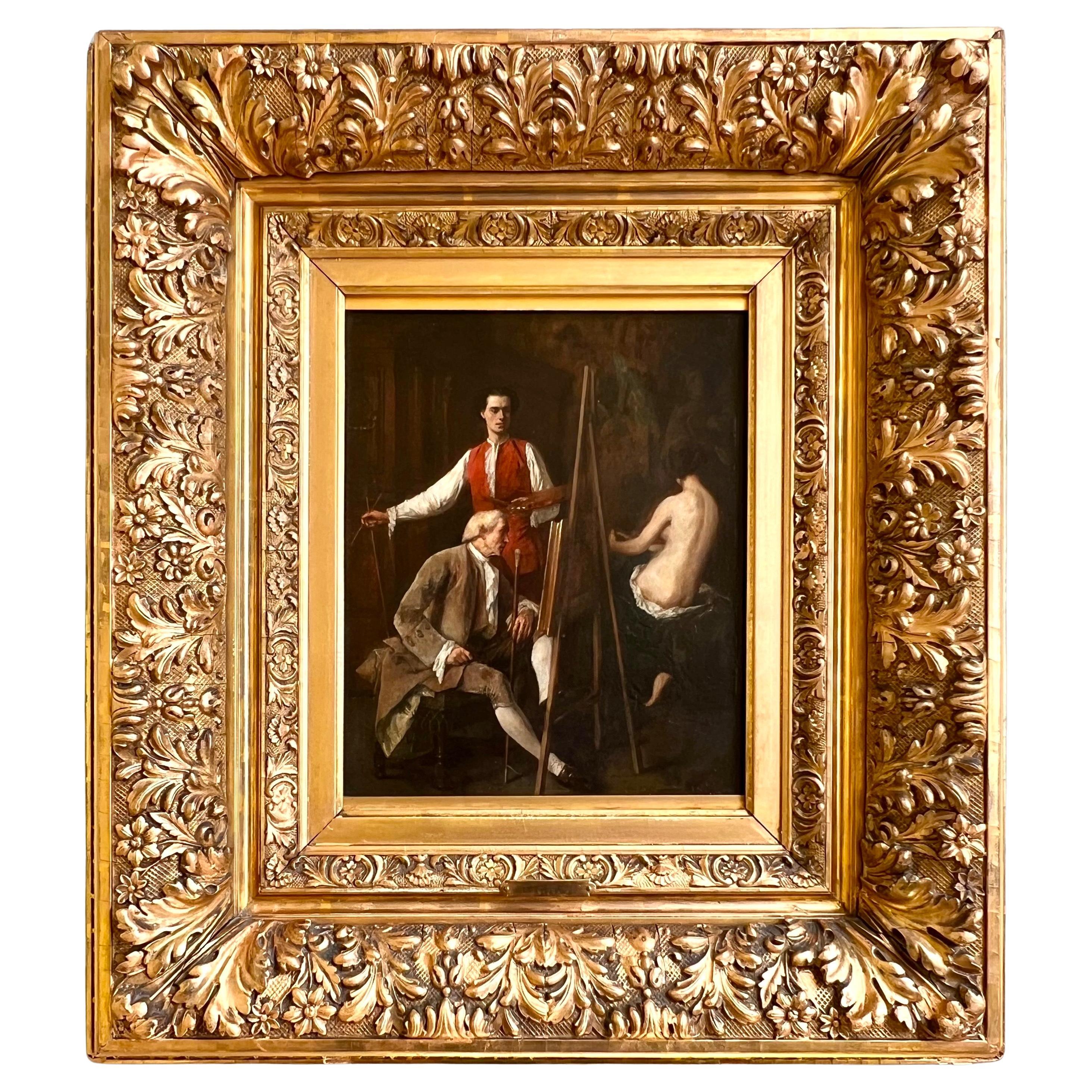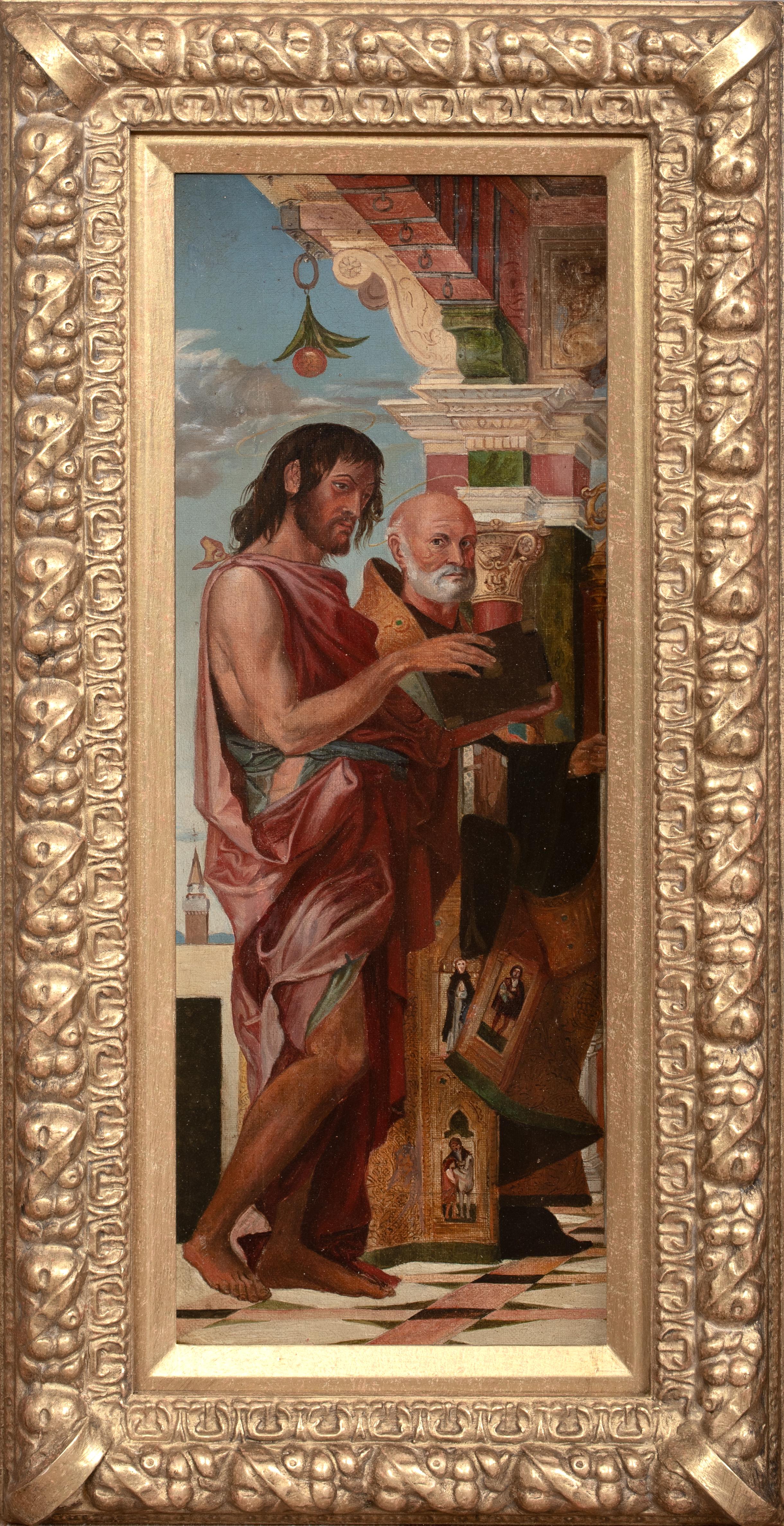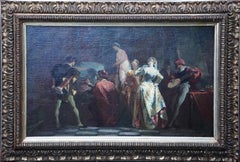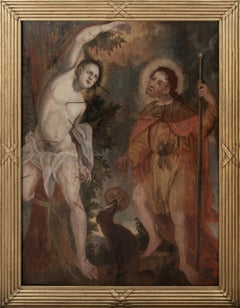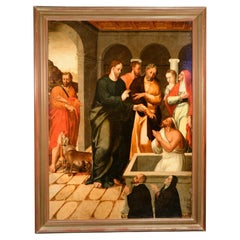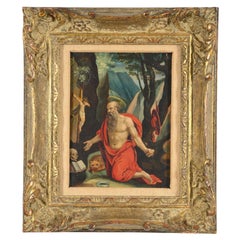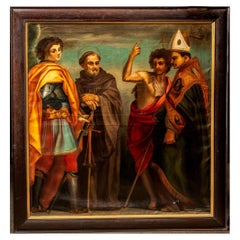Items Similar to Saint Roch with Saint Jerome + Saint Sebastian - British Edwardian oil painting
Want more images or videos?
Request additional images or videos from the seller
1 of 16
Wilfred Gabriel de GlehnSaint Roch with Saint Jerome + Saint Sebastian - British Edwardian oil paintingCirca 1910
Circa 1910
$5,476.27
$6,845.3420% Off
£4,000
£5,00020% Off
€4,695.77
€5,869.7120% Off
CA$7,683.16
CA$9,603.9620% Off
A$8,441.60
A$10,551.9920% Off
CHF 4,353.28
CHF 5,441.6020% Off
MX$101,138.86
MX$126,423.5820% Off
NOK 55,273.22
NOK 69,091.5220% Off
SEK 51,871.67
SEK 64,839.5920% Off
DKK 35,070.81
DKK 43,838.5220% Off
About the Item
This superb religious figurative oil painting is by noted artist Wilfred de Glehn. Although some experts rank de Glehn alongside Sargent, he is considered as something of a late British Renoir, for his deft use of sunlight and shadow. Indeed he was good friends with John Singer Sargent and collaborated with his on some projects. This painting, painted circa 1910 is of three saints, from left to right they are Saint Jerome, Saint Roch and Saint Sebastian. It is based on a work attributed to 16th century artist Alessandro Oliverio. Saint Jerome was a biblical translator and monastic leader and is depicted in red, holding books. Saint Roch and Saint Sebastian were known as the Plague saints - Plague saints offered hope and healing before, during, and after times of plague. A specific style of painting, the plague votive, was considered a talisman for warding off the plague. It portrayed a particular saint as an intercessor between God and the person or persons who commissioned the painting – usually a town, government, lay confraternity, or religious order to atone for the "collective guilt" of the community. Rather than a society depressed and resigned to repeated epidemics, these votives represent people taking positive steps to regain control over their environment. Paintings of Roch represent the confidence in which renaissance worshipers sought to access supernatural aid in overcoming the ravages of the plague. The thirteenth-century Saint Roch (or Rocco), whose death is still commemorated in Italy, is especially invoked against the plague. He attended plague victims in public hospitals in Italy according to traditional accounts of his life. Images attributed to the Spanish historical painter Nicolás Borrás in the Royal Cornwall Museum, or other works in institutions from The National Gallery to the Wallace Collection, show him baring his thigh to show the mark of the plague, as he is in this painting. Saint Roch is also the patron saint of dogs, after one carried food to him in the prison where he died. Renaissance images of Saint Sebastian, riddled with arrows in the moment of martyrdom, feature in The Ashmolean and The National Gallery – he was also considered a protection against the plague. Sebastian is said to have served as a Roman soldier in third-century Italy; a Roman prefect whom he converted was supposedly cured of the plague after renouncing pagan beliefs. But it was in the medieval period that healing powers were widely attributed to him. The tree saints are in a landscape with beautiful clouds behind them. This is an interesting example of de Glehn's work and a beautiful depiction of three much loved saints.
Provenance: Yorkshire estate.
Condition. Oil on canvas, 31 inches by 30 inches and in good condition.
Frame. Housed in a gilt frame, 38 inches by 37 inches and in good condition.
Wilfrid Gabriel de Glehn (sometimes 'Wilfried') RA (1870 – 11 May 1951) was an Impressionist British painter, elected to the Royal Academy in 1932. De Glehn's father was Alexander de Glenn of Sydenham, London, himself the son of Robert von Glehn, a Baltic baron with estates near Tallinn in Estonia, who had become a naturalised British subject following his marriage to a Scottish woman. Wilfrid's mother was French. Louise Creighton, a women's rights activist and author, and Alfred de Glehn, a French steam locomotive designer, were Alexander's sister and brother. Wilfried von Glehn (he changed his name in May 1917) was born in Sydenham, south-east London. After schooling at Brighton College with his brother Louis, he studied art briefly at the Royal Academy Schools in South Kensington before going on to the École des Beaux-Arts in Paris, where for a time he lived with his French cousin, the artist Lucien Monod (1867–1957). In 1891 was hired by Edwin Austin Abbey and John Singer Sargent to assist them on their Boston Public Library mural project at Morgan Hall. De Glehn exhibited his own work first in Rome in 1894 and then in Paris in 1895; he was also elected an Associetaire of the Société des Artistes Français. He first exhibited at the Royal Academy in 1896. De Glehn met American-born artist Jane Erin Emmet (1873–1961) in New Rochelle, New York in 1903, and they were married there the following year. Following their wedding, the couple honeymooned in Cornwall, England, vacationed in Paris and Venice, and made a permanent home in Chelsea, London. However, they travelled extensively, often accompanying Sargent on his trips through Europe. When World War I intervened, husband and wife joined the staff of a British hospital for French soldiers, Hôpital Temporaire d'Arc-en-Barrois, Haute-Marne, France in January 1915. The following year, de Glehn was commissioned and served with the Royal Garrison Artillery. He was seconded to the front in Italy in 1917. In May 1917 his family shed the Germanic 'von Glehn' surname. Because of his fluent French, he spent the last part of the war as an interpreter. After the war, de Glehn held solo exhibitions at the Leicester Galleries and in New York (1920). For the next decade the couple would spend summers in Cornwall and winters in France. Although some experts rank de Glehn alongside Sargent, he is considered as something of a late British Renoir, for his deft use of sunlight and shadow. He died in 1951, at the age of 80, at his home, The Manor House in Stratford Tony, Wiltshire, to which he had moved in 1942 after the Chelsea house had been destroyed in the Blitz. His home was the subject of several paintings, as was the Old Rectory in Wilton, which he had previously rented. His portrait of the cellist Florence Hooton from 1936 hangs in the Duke's Hall, Royal Academy of Music. An oil painting of Venice featured on the BBC's Antiques Roadshow in December 2014 and was valued at £20–30,000.
- Creator:Wilfred Gabriel de Glehn (1870-1951, British)
- Creation Year:Circa 1910
- Dimensions:Height: 38 in (96.52 cm)Width: 37 in (93.98 cm)Depth: 2 in (5.08 cm)
- Medium:
- Movement & Style:
- Period:
- Condition:
- Gallery Location:Hagley, GB
- Reference Number:1stDibs: LU853114868532
About the Seller
5.0
Platinum Seller
Premium sellers with a 4.7+ rating and 24-hour response times
1stDibs seller since 2018
466 sales on 1stDibs
Typical response time: <1 hour
- ShippingRetrieving quote...Shipping from: Hagley, United Kingdom
- Return Policy
Authenticity Guarantee
In the unlikely event there’s an issue with an item’s authenticity, contact us within 1 year for a full refund. DetailsMoney-Back Guarantee
If your item is not as described, is damaged in transit, or does not arrive, contact us within 7 days for a full refund. Details24-Hour Cancellation
You have a 24-hour grace period in which to reconsider your purchase, with no questions asked.Vetted Professional Sellers
Our world-class sellers must adhere to strict standards for service and quality, maintaining the integrity of our listings.Price-Match Guarantee
If you find that a seller listed the same item for a lower price elsewhere, we’ll match it.Trusted Global Delivery
Our best-in-class carrier network provides specialized shipping options worldwide, including custom delivery.More From This Seller
View AllJoseph interpreting Dreams - Italian Old Master 17thC religious art oil painting
Located in Hagley, England
This lovely 17th century Old Master religious oil painting is from the Italian School. The subject is Joseph in prison interpreting the dreams of Pharoah's Baker and Butler. The bars...
Category
17th Century Old Masters Portrait Paintings
Materials
Oil
$7,681 Sale Price
20% Off
Artist in his Studio - French 19th century art figurative interior oil painting
By Adolphe Monticelli
Located in Hagley, England
This lovely French 19th century figurative Impressionist oil painting is by Adolphe Monticelli. Painted circa 1870 the painting depicts a group of seven figures amusing themselves in...
Category
19th Century Realist Portrait Paintings
Materials
Oil
Onward Christian Soldiers - British Edwardian 1911 art religious oil painting
By Frank Owen Salisbury
Located in Hagley, England
This striking British Edwardian religious oil painting is by noted artist Francis 'Frank' Owen Salisbury or Frank O'Salisbury as he is largely known. Painted in 1911 it is a figurative landscape of soldiers on the battlefield. The two central characters, the 'Christian Soldiers' from the early crusades have halos and ride through the chaos on white horses. Shafts on light with angels illuminate them and also a crucifix. A very powerful Edwardian religious oil painting and an excellent example of O'Salisbury's work. painted in oil and illuminated in gold leaf.
Signed and dated with monogram lower right 1911.
Provenance. From Castle of Park, Aberdeenshire.
A version of this painting was exhibited at the Royal Academy London in 1911 entitled the Passing of War.
Condition. Oil on canvas, 36 inches by 24 inches unframed and in good condition.
Frame. Housed a complementary frame, 44 inches by 32 inches framed and in good condition.
Francis ("Frank") Owen Salisbury (18 December 1874 – 31 August 1962) was an English artist who specialised in portraits, large canvases of historical and ceremonial events, stained glass and book illustration. In his heyday he made a fortune on both sides of the Atlantic and was known as "Britain’s Painter Laureate". His art was steadfastly conservative and he was a vitriolic critic of Modern Art – particularly of his contemporaries Picasso, Chagall and Mondrian. His father, Henry Salisbury, described himself as a "plumber, decorator and ironmonger" (his mother was Susan Hawes), yet his son Frank would become one of the greatest society artists of his generation. One of 11 children, Salisbury was such a delicate child that he was educated at home, in the main by his student teacher sister, Emilie. He had only a few weeks formal schooling and began work by repairing bicycles at his father’s Cycle Depot in Harpenden. Uncertain as to his ability to find and maintain a job, the family determined that he be apprenticed, at the age of 15, to Henry James Salisbury, his eldest brother, who managed a major stained glass company in Alma Road, St Albans. He rapidly acquired all the practical skills of a stained glass artist and exhibited exceptional skills in the painterly detail that was applied to glass before its final firing. This led to his brother sponsoring him to attend Heatherley’s School of Art three days a week to further a career in painting. He then won a scholarship to the Royal Academy Schools which he attended for five years and where he won two silver medals and two scholarships, including the Landseer scholarship which funded his to travel to Italy in 1896. In due course he would have seventy exhibits accepted for the annual Royal Academy Summer Exhibitions, from 1899 until 1943, though he was never offered membership, which reportedly disappointed him very much. In 1901 he married Alice Maude (d. 1951), daughter of C. Colmer Greenwood, with whom he had several children, including twin daughters Monica and Sylvia. His first Royal Academy exhibit was a portrait of Alice and he often painted pictures of their children. It is for portraiture that he is best known. His speed in producing portraits stemmed from his painting his own twin daughters every morning for an hour and his career began with child portraiture and his painting the Hertfordshire gentry and members of the Harpenden Methodist Church. He had a studio at his home, Sarum Chase. A providential meeting with Lord Wakefield, founder of Castrol Oils and a Methodist philanthropist, saw his introduction to society portraiture. Salisbury’s being selected to paint the Boy Cornwell in the Battle of Jutland then brought him to the notice of Royalty. Lord Wakefield then arranged for him to paint President Woodrow Wilson whilst he was in London, but Wilson departed for Paris and the opportunity was lost. It was to be John W. Davis, American Ambassador to London, who encouraged Salisbury to go to the USA; Davis had met Salisbury at art receptions and had admired his child portraits. Twenty-five members of the Royal House of Windsor sat for Salisbury and he was the first artist to paint HM Queen Elizabeth II. In 1919 he painted a mural for the Royal Exchange, London National Peace Thanksgiving Service on the steps of St Paul’s Cathedral, 6th July 1919. He painted Winston Churchill on more occasions than any other artist; the two iconic images of Churchill – The Siren Suit and Blood, Sweat and Tears are both Salisbury images. Mayoral regalia was a ready made requisite for the Salisbury style with Councillor Sam Ryder (of Ryder Cup fame) as Mayor of St Albans being the most famous of his civic images. Other significant portraits include those of Richard Burton, Andrew Carnegie (posthumous), Sir Alan Cobham, Sir Robert Ludwig Mond, Maria Montessori...
Category
1910s Realist Figurative Paintings
Materials
Oil
Portrait of Putti Playing - French 17th century art Old Master oil painting
Located in Hagley, England
This stunning French 17th century Old Master oil painting is by Baroque artist Laurent de la Hyre. It was painted circa 1645 and has excellent prove...
Category
17th Century Old Masters Portrait Paintings
Materials
Oil
Charity - Royal Academy exhib. 19thC art Pre-Raphaelite portrait oil painting
By Rudolf Lehmann
Located in Hagley, England
This stunning circular 19th century oil painting is by noted prolific Royal Academy exhibited artist Rudolf Lehmann. A portrait artist, German born Lehmann moved to England in 1866 w...
Category
19th Century Pre-Raphaelite Portrait Paintings
Materials
Oil
$43,810 Sale Price
20% Off
Blessing the Harvest - Belgian 19thC art figurative Victorian oil painting
Located in Hagley, England
This stunning arched top Victorian figurative oil painting is by noted Belgian artist Charles Soubre. It was painted in 1853 and is signed and date lower right. The composition is a ...
Category
1850s Victorian Figurative Paintings
Materials
Oil
$15,363 Sale Price
20% Off
You May Also Like
Saint Sebastian And Saint Roch, Flemish / German School - Oil On Panel
Located in Blackwater, GB
Saint Sebastian and Saint Roch, 16th century
Flemish / German school - oil on panel
Beautiful large 16th century representation of the martyrdom of Saint ...
Category
16th Century Paintings
Materials
Oil, Panel
Raising of Lazarus with Saint Roch and two donors. Oil on panel. 16th century
Located in Madrid, ES
Raising of Lazarus with Saint Roch and two donors. Oil on panel. Castilian School, 16th century.
Oil on panel depicting an interior scene with semicircular arches and Ionic capital...
Category
Antique 16th Century Spanish Renaissance Religious Items
Materials
Other
17th/18th century Flemish old master oil painting of Saint Jerome
Located in Long Island City, NY
17th/18th century Flemish old master painting of Saint Jerome in a landscape with objects. Oil on copper. Framed. Light inscription on reverse. Sight: 9 x 7in. Overall: 14 x 12in.
Co...
Category
Antique 17th Century Unknown Paintings
Materials
Copper
The Four Saints Early 20th Century Oil On Canvas Convent Painting
Located in Dekalb, IL
Early 20th century remake of a piece originally created by Andrea del Sarto in 1528.
The piece in question is a detail from a much larger mural that itself was a remake of the Vallom...
Category
Early 20th Century American Renaissance Paintings
Materials
Canvas, Paint
"The Painter and His Muse" Painting by Eugène Benjamin Fichel
By Benjamin Eugène Fichel
Located in Wiscasset, ME
Oil on panel signed in the lower right corner and presented in a period frame measuring 21" x 18.5".
Benjamin Eugene Fichel, France, (1826 - 1895)
B. Eugène Fichel was born on Au...
Category
Antique 19th Century French Baroque Paintings
Materials
Paint
Saint John the Baptist & Saint Benedict after Bartolomeo Montagna (1450-1523)
Located in Blackwater, GB
Saint John the Baptist & Saint Benedict, 18th Century
Diptych after lost work by Bartolomeo Montagna (1450-1523)
Large 18th Century Italian Old Master depiction of Saint John the B...
Category
18th Century Portrait Paintings
Materials
Canvas, Oil
